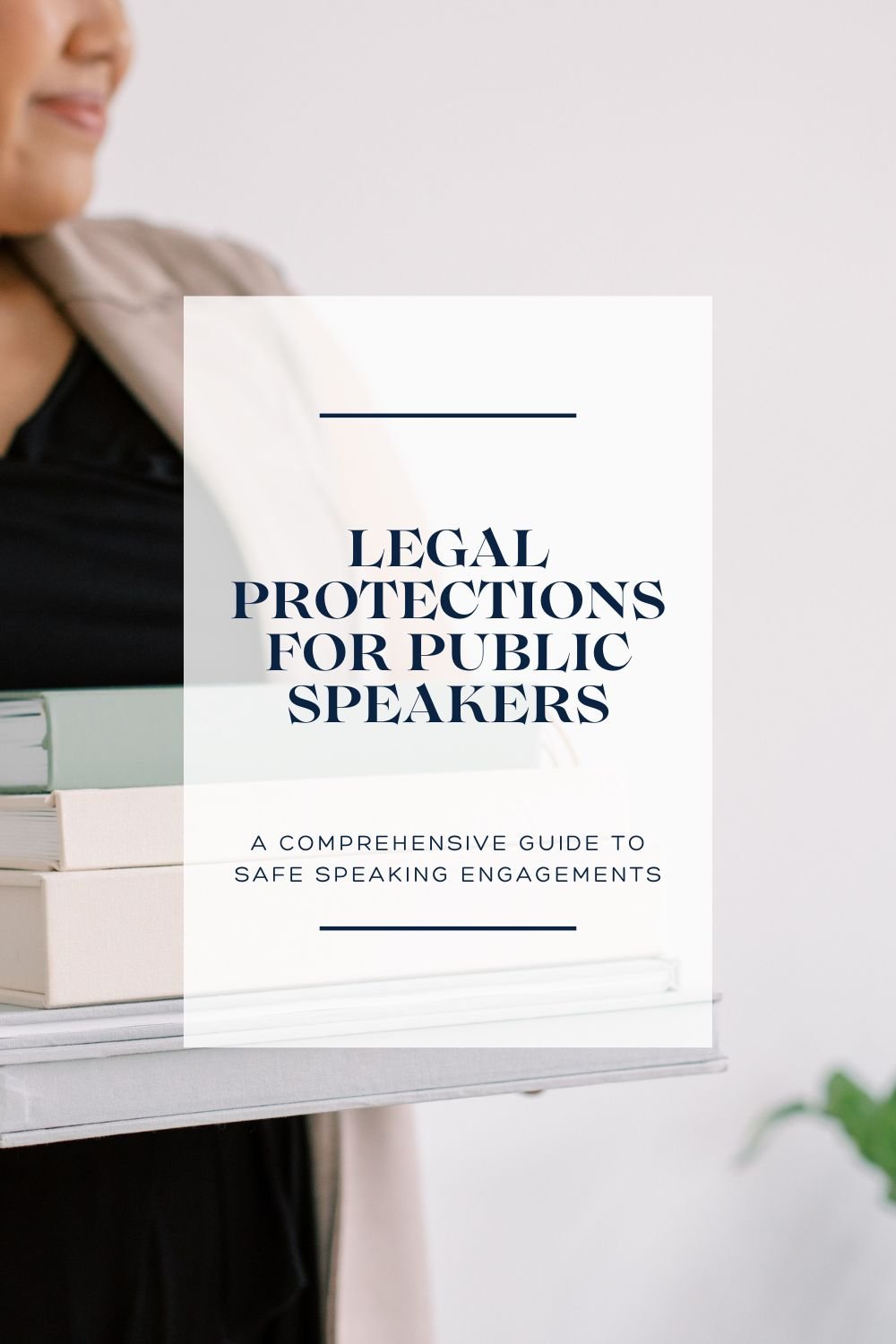What to do if Someone Copies your Business or Website
Someone copying your website, or even a piece of content, is majorly distressing, to say the least. It is also harmful to your business, a huge hassle, oh and definitely illegal and a violation of copyright.
A website is your online identity, it’s your business’s primary residence - the space where you have built your brand, grown your community, and shared your ideas and offerings. It’s personal, it’s valuable, and it is your intellectual property.
If you are reading this article, you likely already know that someone has copied your website. But if you’re just curious, or want to be vigilant, you can use Copyscape to search for your site’s text and Google Reverse Image to look for copied images. Copyscape charges a fee but they also offer routine monitoring if this is major concern for you. Another way to look out for copies is to track your site analytics.
The frustrating thing is that nothing can be done in advance to prevent someone from stealing your site. You can only take steps to make sure you can get your site back and that your content is protected. Fortunately, under US law, anything that you publish online is instantly copyrighted. You don’t have to file any forms, you have copyright as soon as you hit publish. In the future, registering your copyright will give you even better protection but I’ll discuss that at the end of this article.
As tempting as it might seem, you don’t want to call your lawyer immediately. Litigation is expensive and you are going to want to try to avoid the legal fees if you can.
First, don’t panic. Take a deep breath.
Now, get ready to document the infringement.
Take screenshots and video screen captures of the infringing website, be sure to also document your own site’s appearance too. Use the Wayback Machine to document what your site looked like historically and when the copying site appeared. If possible compile a list of dates that different features of your website published.
Now, that you have your documentation, reach out to the owner of the infringing site and explain what happened. Let them know that by copying your content they are infringing on your copyrights. Use a formal tone but there is no need to be aggressive initially. As crazy as it might seem, they might know that they have infringed on your rights. They might be naive or they might have hired a web designer or third-party vendor who infringed without their knowledge. Keep a copy of this letter or email in case you need to document the steps that you have taken and will clearly establish that you provided notice of infringement to the copied site owner.
Next, you can use WHOIS to find out who their domain host is and then contact the host directly. Once you know the name of the hosting company, check their website and see if they have a dedicated contact for DMCA infringement issues, this is a common practice. If they do, contact that person and file a complaint. You will likely need to provide the evidence that you gathered to demonstrate what content was copied and that your content is original content.
If neither the site owner nor the hosting company takes down the copied site, it may be time to contact your attorney. Your attorney will likely start by sending additional cease and desist letters with a takedown request and possibly a demand for reimbursement. Their letter will also likely explain the legal actions that you may pursue if the site owner fails to comply. Receiving a cease and desist letter on legal letterhead with an attorney’s signature is often the extra gravity that is needed to resolve this situation.
Love This Info? Check Out Related Articles:
Having your content stolen is scary and frustrating. It’s okay to be upset over someone’s taking your hard work and passing it off as their own, it’s disrespectful. But try to keep calm and make sure you have documented evidence, often times the infringer will cooperate after your first infringement notification email or letter. Remember, you have options and you have rights.
Now that you know the steps to take if you discover that your website has been copied, let’s take a look at what you can do to try to prevent copying in the first place. As they say, an ounce of prevention is worth a pound of cure.
As discussed above, you have a copyright to anything original that you post online as soon as you publish it. However, taking steps to formally register your copyright can be smart and it can make it easier to win a legal case if you get to that point.
An easy first step is to add the copyright symbol © to your website. At a minimum, you’ll want to include in your website footer with dates of updates and your business. It should look like this “© 2019-2023 YOUR BUSINESS NAME.” Be proactive and set a reminder for January 1st to go in and update the second year as soon as the calendar changes.
The next step toward official registration is gathering the content that you wish to register. Yes, that means individual pages, blog articles, photos, logos, and any other media. You will want to register this as a collection of content rather than filing individual applications for each piece of content. But, you will have to provide a hard copy of each piece of content that you are including in your copyright application. There is a digital form but you must also send a physical copy by mail. Digital files may be sent as print outs or on a USB drive.
The US Copyright Office requires that the hard copies submitted be of “the best edition” meaning they should be high quality and accurately represent your site. Don’t risk delaying your application by using black and white printing or fuzzy screenshots.
You can find the copyright registration paperwork at https://www.copyright.gov/registration/ and filing electronically has a slightly lower registration fee. You can track your application online but expect to wait several months, processing times can average seven months.
You won’t ever have to re-register your content but you will want to register any new content that you create for your website. It’s a great idea to schedule twice-yearly content batch registrations. And you should seriously consider registering any eBooks or Courses that you create as well. In the US copyright lasts for the life of the author plus 75 years which is a lot of protection for the twice-yearly inconvenience of batching your content and a small application fee.
You would also be wise to consider trademarking the important marks used in your business. This is a more complicated process but trademarks last forever as long as the mark is in continued business use. Legally, a mark is a recognizable phrase, word, or symbol that distinguishes a particular product from all other products of its kind. Trademarks are more expensive to get and the application is much more lengthy. I don’t actually recommend spending time and money trademarking brand new marks, it can be better to wait a bit and make sure that the mark is effective in distinguishing your products and business from other similar products companies for your customers. But because the application process is lengthy, you will want to start working on trademarks as soon as you realize a particular phrase, word, or symbol is successful.
Another good preventative step is to be sure that your website’s Terms and Conditions policy has a clear clause addressing intellectual property. Remember that your website’s Terms and Conditions policy contains the rules for how customers interact with your site. Your policy should clearly state that by using your website, visitors are consenting to be bound by the policies in the Terms and Conditions.
A well-written and legally sound Terms and Conditions policy will directly address your intellectual property rights. It should explain to website visitors that all content contained on the website including your copy, logos, buttons, graphics, and images, is your business’s exclusive intellectual property and that it may not be copied, shared, altered, sold, or distributed by any means without your express written consent. It should also explain that anything a visitor purchases from your site is also your intellectual property and that they do not have permission to copy, share, alter, sell, or distribute it by any means.
A well-written and properly linked Terms and Condition policy just might deter a potential infringer but, more importantly, it will be solid proof that the infringer should have been on notice of your intellectual property right. Sidebar: I always recommend linking your Terms and Conditions policy in your website footer as a separate page from your Privacy Policy and Disclaimer. It is not best practice to link a single “legal” page with all three documents.
This article is mostly focused on protecting your website from being copied but it is worth noting that you will want to include similar intellectual property language in your Terms and Conditions for Online Sales policy and as part of any downloadable content whether a freebie or available for purchase.
Need help with all of this? I have a general Website Terms and Conditions policy, a Terms and Conditions policy for online sales, and disclaimers for downloadable content all available in my shop. Check them out and breath a little easier!
THIS ARTICLE IS NOT A SUBSTITUTE FOR LEGAL ADVICE AND IS OFFERED FOR INFORMATIONAL PURPOSES ONLY. EVERY SITUATION IS UNIQUE AND YOU SHOULD CONSULT A LOCAL ATTORNEY FOR ADVICE ON YOUR PARTICULAR CIRCUMSTANCES.





Dive deep into US trademark law tailored for small businesses! Learn the differences between trademarks, patents, and copyrights, and why a domain name isn't enough. Explore the intricate process of trademark searches, and ensure your brand stands out and remains protected. Knowledge is power – empower your business journey!